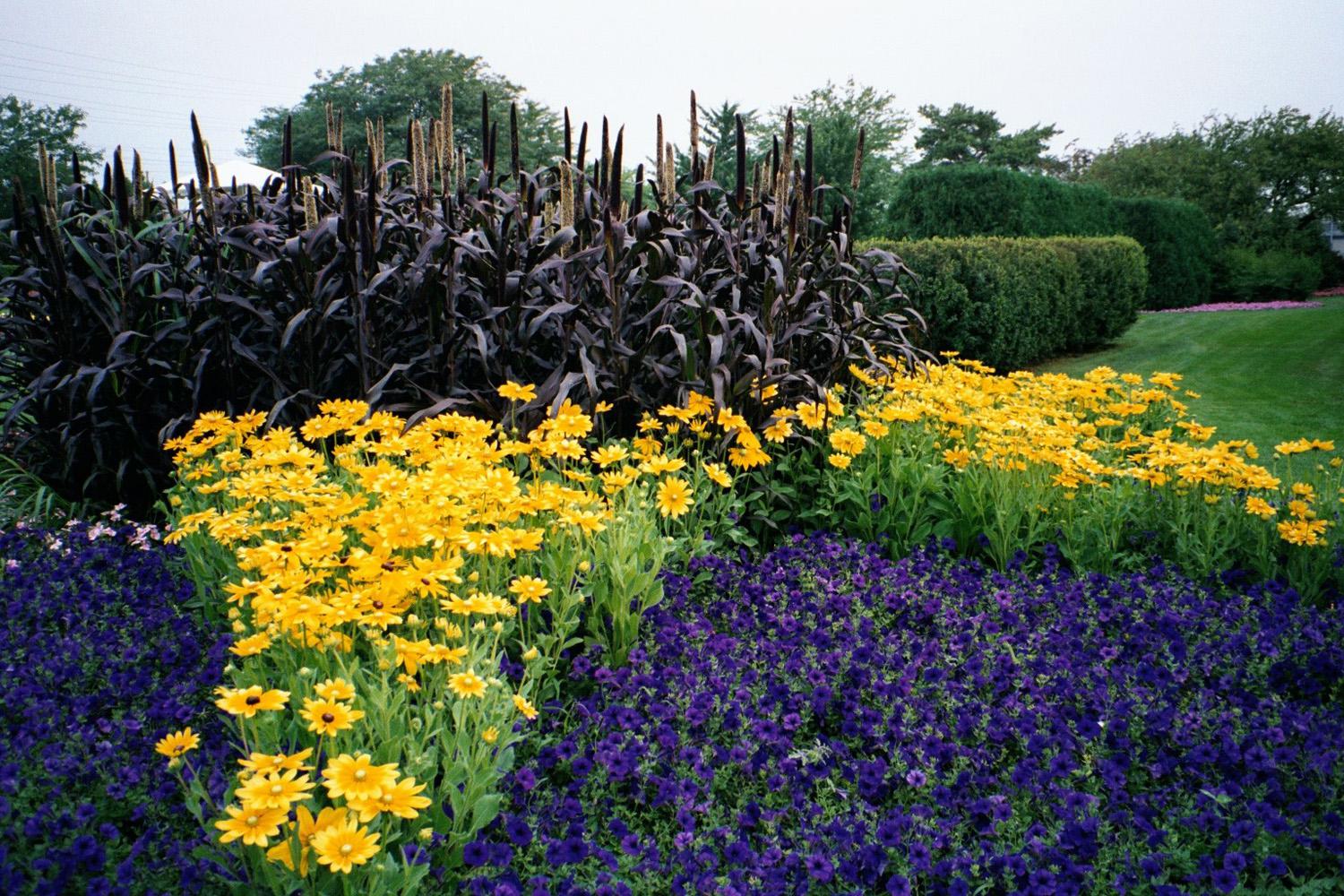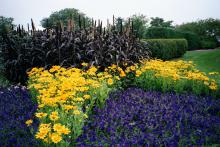Information Possibly Outdated
The information presented on this page was originally released on April 8, 2004. It may not be outdated, but please search our site for more current information. If you plan to quote or reference this information in a publication, please check with the Extension specialist or author before proceeding.
Purple Majesty will impress the neighbors
By Norman Winter
MSU Horticulturist
Central Mississippi Research & Extension Center
Purple Majesty is an ornamental millet that is one of the most eye-catching plants of the 21st century. As an All-America Selections Gold Medal winner last year, many gardeners were still too timid to let this plant really impress the neighbors.
Thousands of shoppers have seen it growing in past years at Northpark Mall in Jackson and wondered what it was. In the Northpark garden, it was used with cannas and elephant ears for a really unique, if not exotic, look.
You may be thinking there is no way you will put a grain in your landscape. But before you jump to conclusions, consider the botanical name of Purple Majesty, Pennisetum glaucum. You see, it is closely related to fountain grass, Pennisetum alopecuriodes.
This species is native to the United States. As an annual, it thrives in our summer heat and produces dark purple leaves topped by equally dark, fruited plumes. They will stand out in gardens wherever they are planted.
Select a site in full sun for the showiest color. The bed should be fertile, organic-rich and well-drained. Amend the soil if needed with 3 to 4 inches of organic matter and till to a depth of 8 to 10 inches. While preparing the soil, incorporate 2 pounds of a slow-release, 12-6-6 fertilizer per 100 square feet of bed space.
Plant at the same depth they are growing in the container with the crown slightly above the soil profile. Space plants 10 to 12 inches apart. Purple Majesty will get 4 to 5 feet tall, so place them accordingly in the flower border.
Because it is an annual and is easily grown from seed or transplants, it is possible to have succession plantings. If you do this, either remove the old plants (transplants) and keep the fresh ones (seed) going, or plant them all together for a layered look of differing heights.
One of the key considerations to get the maximum beauty of the plant is to transplant to the garden before Purple Majesty gets root-bound in the container. This will improve its branching and therefore the number of blooms. Apply a good layer of mulch after planting.
Give a light application of the fertilizer a month after transplanting and again six to eight weeks later. Keep the grass watered during the summer for the best appearance. Avoid letting it dry to the wilting point. The plumes, which are a lot like cattails, are great for using in vases or for drying.
Purple Majesty looks its best when mass-grown or planted in clusters of seven to nine plants. Spot planting one or two simply doesn't do the plant justice. Use them as a backdrop in the border and plant Hameln dwarf fountain grass in front. One of the most spectacular beds I've seen used it with Prairie Sun rudbeckia planted in front of the Purple Majesty and then Blue Wave petunias in front of the Prairie Sun.
Purple Majesty will be a "must" plant for the new Southern landscape. You can plant it in the spring, summer or fall. Look for it now at your local garden center.



